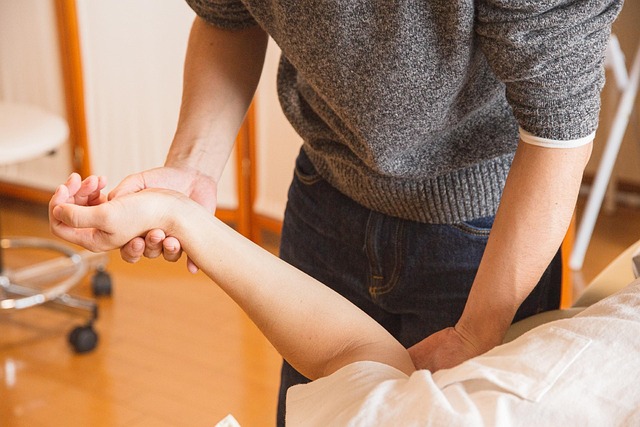Stroke Treatment:Care,Rehabilitation,Therapies
Stroke treatment requires immediate action to reduce brain damage and promote recovery. Recover from stroke with tailored therapy and exercise. A stroke occurs when the blood supply to a part of the brain is interrupted or reduced, preventing brain tissue from getting oxygen and nutrients. This can be due to a blocked artery (ischemic stroke) or a leaking or bursting of a blood vessel (hemorrhagic stroke). The impact of a stroke can be profound, affecting speech, movement, and memory. Understanding the nature of strokes is crucial in recognizing symptoms and seeking immediate medical intervention.

What is a stroke and how does it impact the body?
A stroke occurs when blood flow to a part of the brain is interrupted, either by a blockage (ischemic stroke) or a ruptured blood vessel (hemorrhagic stroke). This interruption deprives brain cells of oxygen and nutrients, leading to cell death and potential long-term disabilities. The impact of a stroke can vary widely, affecting speech, movement, memory, and other cognitive functions. Understanding the severity and location of the stroke is crucial for developing an effective treatment plan.
What are the immediate care steps for stroke patients?
Immediate treatment is critical in minimizing brain damage and improving outcomes for stroke patients. The first few hours after a stroke are often referred to as the “golden window” for treatment. Emergency care typically involves:
-
Rapid assessment and diagnosis using brain imaging techniques
-
Administration of clot-busting drugs for ischemic strokes
-
Surgical interventions for hemorrhagic strokes
-
Stabilization of vital signs and management of complications
Quick action and proper medical care during this critical period can significantly impact a patient’s chances of survival and recovery potential.
How does rehabilitation play a role in stroke recovery?
Rehabilitation is a cornerstone of stroke treatment, aiming to help patients regain lost abilities and adapt to any permanent changes. The rehabilitation process typically begins as soon as the patient is medically stable and can continue for months or even years after the stroke. A comprehensive rehabilitation program may include:
-
Physical therapy to improve mobility and strength
-
Occupational therapy for daily living skills
-
Speech therapy for language and swallowing difficulties
-
Cognitive therapy to address memory and thinking skills
The role of rehabilitation is to maximize recovery potential and help patients achieve the highest possible level of independence in their daily lives.
What innovative therapies are advancing stroke treatment?
Advancements in technology and medical research have led to innovative therapies that are transforming stroke treatment and recovery. Some cutting-edge approaches include:
-
Robotic-assisted therapy for improving motor function
-
Virtual reality systems for cognitive and physical rehabilitation
-
Brain-computer interfaces to assist with communication and movement
-
Stem cell therapy to promote brain repair and regeneration
-
Transcranial magnetic stimulation to enhance neuroplasticity
These innovative therapies offer new hope for improved outcomes and quality of life for stroke survivors, particularly those with severe impairments.
How do exercise and lifestyle modifications impact stroke recovery?
Exercise and lifestyle modifications play a crucial role in stroke recovery and prevention of recurrence. Tailored exercise programs can help improve cardiovascular health, strengthen muscles, and enhance overall well-being. Key lifestyle modifications include:
-
Adopting a heart-healthy diet rich in fruits, vegetables, and whole grains
-
Maintaining a healthy weight through proper nutrition and regular physical activity
-
Quitting smoking and limiting alcohol consumption
-
Managing underlying health conditions such as hypertension and diabetes
-
Engaging in stress-reduction techniques like meditation or yoga
In the United States, stroke rehabilitation centers often incorporate comprehensive lifestyle education programs to empower patients in their recovery journey and reduce the risk of future strokes.
What support systems are available for emotional well-being?
The emotional impact of a stroke can be as significant as the physical effects. Support systems play a vital role in helping stroke survivors and their families navigate the challenges of recovery. Available resources include:
-
Support groups for stroke survivors and caregivers
-
Counseling and psychological services
-
Community-based rehabilitation programs
-
Home health services and respite care
-
Vocational rehabilitation for those seeking to return to work
| Support Type | Provider | Key Features/Benefits |
|---|---|---|
| Support Groups | American Stroke Association | Peer support, education, and resources |
| Counseling | Local hospitals and clinics | Professional mental health support |
| Community Programs | Local rehabilitation centers | Ongoing therapy and social interaction |
| Home Health | Various home health agencies | In-home care and rehabilitation services |
| Vocational Rehab | State vocational rehabilitation agencies | Job training and workplace accommodations |
Stroke treatment is a multifaceted process that requires a comprehensive approach, from immediate medical intervention to long-term rehabilitation and support. By understanding the various aspects of stroke care and leveraging innovative therapies, patients can maximize their recovery potential and improve their quality of life. The journey to recovery may be challenging, but with proper treatment, rehabilitation, and support, many stroke survivors can achieve significant improvements and regain independence.
This article is for informational purposes only and should not be considered medical advice. Please consult a qualified healthcare professional for personalized guidance and treatment.




